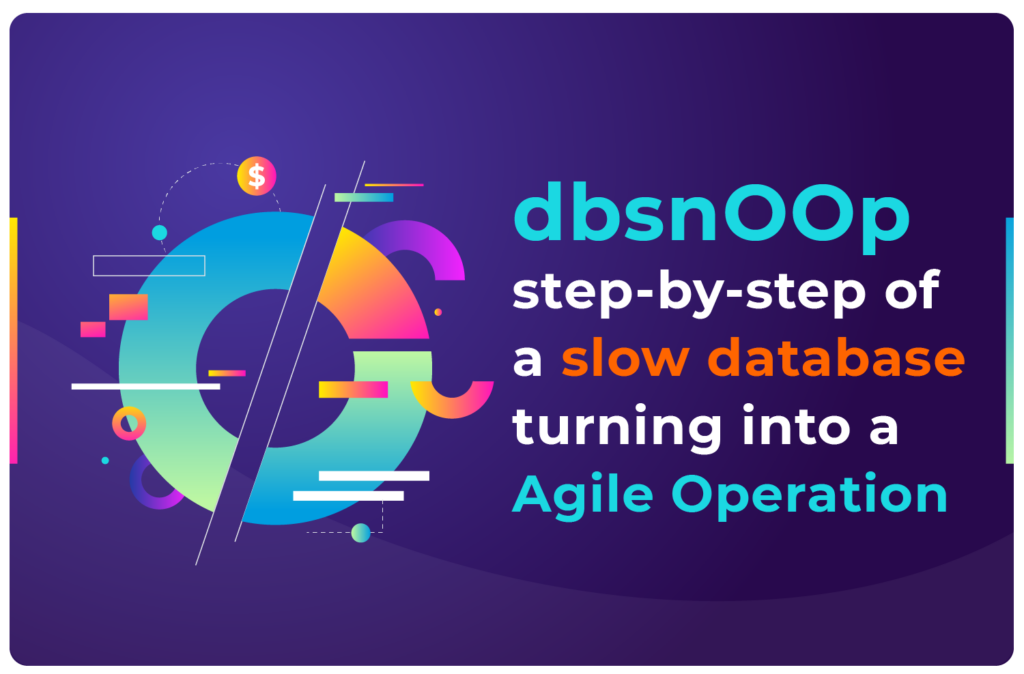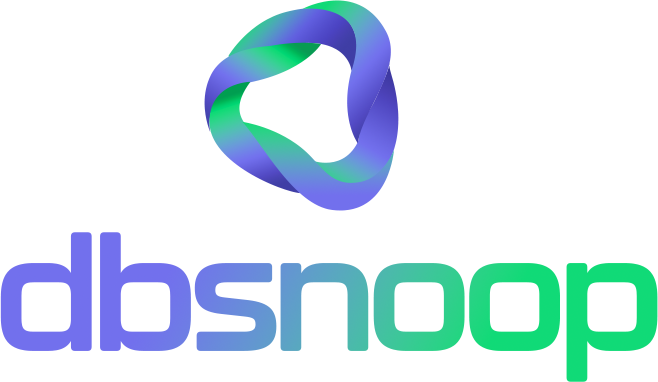

The root cause of latency in distributed applications lies, in the vast majority of cases, in the data layer. Diagnosing the origin of the problem, however, is the main technical challenge. Tools that only monitor infrastructure metrics, such as CPU and I/O, point to the symptom but fail to reveal the disease: the specific query with a suboptimal execution plan, the lock contention on a critical table, or the missing index that forces a costly full table scan. This correlation gap between the symptom and its fundamental cause is where reactive troubleshooting approaches fail and observability becomes indispensable.
Observability allows engineering not only to see that the system is slow but to ask why it is slow, tracing the inefficiency back to its source in the database. This article presents a practical step-by-step guide for SRE, DevOps, DBA, and developer engineers to implement this transition, using the dbsnOOp platform to transform data management from a reactive bottleneck into a pillar of agility and performance for the business.
This is where the journey of transforming a slow environment into an agile one begins, and dbsnOOp is the guide and the solution for each step of this process, turning raw data into performance intelligence.
The Initial Diagnosis: Understanding the Roots of Slowness
Before applying any solution, it is essential to perform a precise and deep diagnosis. Slowness rarely has a single cause; it is, most of the time, a symptom of multiple interconnected factors that manifest under load. Agile environments are not born overnight but from a careful and continuous analysis of the bottlenecks that hinder performance. The first step is to stop guessing and start measuring what really matters.
Mapping the Performance Villains
The vast majority of performance problems in databases can be categorized into a few critical areas. Identifying which of them, or which combination of them, is impacting your environment is the first step toward optimization.
- Non-existent or Poorly Constructed Indexes: This is, by far, the most common offender. Without a proper index, the database is forced to perform “full table scans,” reading millions of unnecessary rows to find a small subset of data. It’s like looking for a word in a book without an index: inefficient and time-consuming. The issue goes beyond the mere existence of an index; its selectivity is crucial. An index on a column with low cardinality (few distinct values) might be ignored by the optimizer or even worsen performance. dbsnOOp not only identifies the absence of an index but also analyzes the query and the table structure to recommend the most selective and effective index, providing the exact command for its creation.
- Poorly Written Queries and Anti-Patterns: The second most common villain. Complex joins without the correct keys can result in Cartesian products, exponentially multiplying the number of rows to be processed. The indiscriminate use of SELECT * increases network traffic and memory consumption on both the database server and the application. Functions applied to columns within the WHERE clause can prevent the use of existing indexes. The “N+1” problem in ORMs, where a loop in the application generates hundreds of small queries instead of a single optimized one, is another frequent culprit that overloads the database with trivial but numerous executions.
- Locks and Concurrency: In high-concurrency transactional environments, the dispute for resources is inevitable. When a transaction modifies a piece of data, it “locks” it to ensure integrity. Other transactions that need to access the same data must wait. When this happens excessively, performance plummets. Deadlocks, where two or more transactions lock each other out, waiting for resources that the other holds, can paralyze critical parts of the system. dbsnOOp provides real-time visibility into which sessions are locked and who is locking them, allowing for a quick resolution of these conflicts.
- Stale Statistics: The query optimizer, the brain of the database, is an extremely complex piece of software that works based on costs. It analyzes dozens of possible “execution plans” for a query and chooses the one it estimates to be the cheapest in terms of resources (I/O, CPU). This estimate depends on accurate statistics about the data distribution in the tables. If the data changes significantly and the statistics are not updated, the optimizer operates with an outdated map, making bad decisions and choosing suboptimal execution plans that can be orders of magnitude slower.
- Infrastructure Bottlenecks (I/O, CPU, Memory, Network): In the cloud era, infrastructure is software. Disks with insufficiently provisioned IOPS, “burstable” instances that have exhausted their CPU credits, or network latency between the application layer and the database can be the root cause of slowness. Identifying whether the bottleneck is in the infrastructure or in the database workload is one of the biggest challenges. Traditional tools cannot correlate a spike in disk latency with the specific query that caused it.
The Limitation of Traditional Tools
The fundamental problem with legacy approaches is fragmentation. The infrastructure team uses one tool to monitor operating system metrics. The APM (Application Performance Management) team has its view focused on the application code. And the DBA uses their own scripts and tools to analyze the internal metrics of the database.
During an incident, this leads to a “war room” where each team presents its data, but no one can assemble the puzzle. The lack of a unified context generates a blame game and drastically prolongs the resolution time. This is where dbsnOOp’s approach differs.
Instead of just presenting isolated metrics, the platform offers complete and contextualized observability, correlating data from the infrastructure, the database workload, and the application’s behavior. With the dbsnOOp Flightdeck, it is possible to see in a single timeline the increase in CPU consumption, the exact query that caused it, its execution plan, the session that executed it, and the user who originated it, transforming the diagnosis from hours of investigative work into minutes of targeted analysis.
Step 1: Implementing Continuous Observability
The transition from a reactive environment, that lives on firefighting, to a proactive and agile one begins with visibility. Observability is the foundation of agility, allowing DevOps and SRE teams to understand not just “what” is slow, but “why” it is slow and “what the impact” is on the business’s SLOs (Service Level Objectives). The SRE culture, popularized by Google, is based on pillars such as the measurement of latency, traffic, errors, and saturation. Observability provides the raw data and context for these pillars to be effectively measured and managed.
The Pillars of Observability in Practice with dbsnOOp
Implementing observability does not just mean collecting more data, but collecting the right data and, more importantly, connecting it intelligently to tell a story. dbsnOOp was built on the three essential pillars of observability, applied specifically to the complex domain of databases:
- Metrics: The platform collects hundreds of vital database metrics (such as buffer cache hit ratio, wait events, logical vs. physical reads) and operating system metrics (CPU, memory, I/O, network). But it goes further, presenting them in a context that makes sense for performance analysis. Instead of a generic CPU chart, dbsnOOp shows what percentage of the CPU is being consumed by the database versus other processes and, within the database, which queries are the biggest consumers.
- Logs: Database logs are notoriously verbose and difficult to analyze. Instead of forcing manual analysis of extensive log files, dbsnOOp ingests, processes, and correlates important log events (such as deadlocks, errors, and checkpoint times) with performance metrics, allowing you to see, for example, how a checkpoint event impacted query latency at that exact moment.
- Traces: This is the big differentiator. For the database, a “trace” is a query’s execution plan. dbsnOOp traces the execution of a query from its origin in the application to its execution in the database, analyzing each step of the execution plan to identify the exact point of the bottleneck. It not only shows the plan but also visualizes it graphically, highlighting the most costly operations and explaining why they are problematic.
With this unified 360-degree view, SRE and DevOps teams can finally have a common language and a single source of truth. The developer can see the real impact of their code on the database, and the SRE can accurately identify whether the problem is a software performance regression or an infrastructure limitation, all in a single interface.

Step 2: Proactive Database Optimization and Intelligent Troubleshooting
With observability implemented, the team stops “firefighting” and starts preventing them. Optimization becomes a continuous, data-driven process, no longer a reaction to incidents and user complaints. This is the essence of an agile environment: the ability to identify and resolve problems before they impact the end-user, keeping SLOs and error budgets under control.
Simplified Execution Plan Analysis
The execution plan is the map that the database creates to fetch the data requested by a query. Understanding this map is the key to optimization, but historically it has been a complex task, reserved for specialists who have mastered the art of interpreting textual diagrams and arcane operations like Nested Loops, Hash Joins, and Bitmap Scans. dbsnOOp democratizes this analysis. The platform not only captures the execution plan but also translates it into actionable insights.
It identifies high-cost operations, such as Table Scans on large tables, and suggests the creation of specific indexes to transform this operation into a low-cost Index Seek. In many cases, a simple index can reduce a query’s execution time from minutes to milliseconds. dbsnOOp not only recommends the index but also provides the exact CREATE INDEX command, ready to be validated and executed, eliminating the need for manual analysis and the risk of human error.
From Diagnosis to Solution in Minutes
Let’s contrast a troubleshooting scenario with and without dbsnOOp. Imagine a critical e-commerce feature, the payment checkout, becomes slow during a sales peak.
The Traditional Flow:
- The application latency alert is triggered in the APM. The SRE team is paged.
- The SRE checks the application logs and sees database connection timeouts. The problem is escalated to the DBA.
- The DBA connects to the server, runs scripts to see the active sessions, and notices a high number of latch free waits.
- After 45 minutes of cross-analysis, the DBA finally isolates an update query in the shopping cart that is causing a cascading block.
- The solution (optimizing the query or the index) still needs to be developed and tested. The total business impact time has already exceeded one hour.
The Flow with dbsnOOp:
- dbsnOOp’s AI detects an anomaly: a sudden increase in the “DB Time” metric correlated with a specific type of wait event.
- The SRE or DBA accesses the dbsnOOp dashboard and immediately sees the offending query at the top of the list of biggest resource consumers.
- With one click, the platform shows the root cause analysis: the query is stuck waiting for a lock. Another click reveals the session that is holding the lock and for how long.
- Simultaneously, dbsnOOp analyzes the blocking query’s execution plan and suggests that an index on the “cart_items” table would resolve the contention in the long run.
- The total time for diagnosis and solution identification is less than 5 minutes.
This ability to drastically reduce the Mean Time To Resolution (MTTR) is what defines a truly agile and resilient environment.
Step 3: Adopting Automation to Scale Management
Agility in data environments is not sustainable without intelligent automation. In cloud ecosystems, where infrastructure is ephemeral and scalable, trying to manage dozens or hundreds of databases manually is a recipe for failure. Automation frees engineering teams from repetitive and error-prone tasks, allowing them to focus on higher-value strategic activities, such as architecture, security, and cost optimization.
The Concept of the Autonomous DBA
dbsnOOp introduces the concept of the “Autonomous DBA,” where artificial intelligence and automation take responsibility for 24/7 monitoring, diagnosis, and optimization recommendations. This does not mean replacing the DBA, but rather their evolution.
Instead of spending 80% of their time on reactive operational tasks (checking backups, applying patches, responding to alerts), the DBA can become a Data Architect or a Database Reliability Engineer (DBRE), focusing on data governance, capacity planning, high-availability architecture, and collaborating with developers to create more efficient applications from the start.
Automation via dbsnOOp covers critical areas:
- Predictive Anomaly Detection: dbsnOOp’s AI establishes a baseline of your database’s normal behavior. It learns the seasonal load patterns and detects subtle deviations that indicate an impending problem, such as the gradual increase in the latency of a critical query, even before traditional alert thresholds are breached.
- Cloud Cost Optimization: The platform analyzes the actual workload and resource utilization to recommend the “right-sizing” of cloud instances (AWS RDS, Azure SQL, etc.). This avoids unnecessary spending on over-provisioned resources (“just in case”) and ensures you pay only for what you actually use.
- Security and Compliance Management: Automation can be used to continuously audit security configurations, identify hardening deviations (like open ports or excessive privileges), and generate reports that ensure the environment complies with policies like LGPD, GDPR, or PCI.
Integrating Automation into the DevOps Pipeline
True agility is achieved when database performance becomes an integral part of the CI/CD pipeline. With dbsnOOp, it is possible to introduce performance “quality gates.” Before a new version of the application is promoted to production, its queries can be automatically analyzed by dbsnOOp in a staging environment. The platform compares the performance of the new version’s queries with the baseline of the production version.
If a significant regression is detected (for example, a crucial query became 50% slower), dbsnOOp can fail the build in the pipeline (via integration with Jenkins, GitLab CI, GitHub Actions), preventing the inefficient code from reaching the end-user. This incorporates performance responsibility at the beginning of the development cycle, aligned with the “shift-left” philosophy, and avoids the costly scenario of having to fix performance problems in production.
The Result: A Culture of Performance and Agility
Transforming a slow environment into an agile one is more than a technological change; it is a profound cultural shift. It’s about demolishing the silos between Development, Operations, and Data. It’s about creating a culture where performance is a shared responsibility for everyone, measured through clear and objective SLOs. It’s about empowering all teams with a common tool that provides a unified and actionable view, allowing them to make decisions based on data and not on assumptions or guesswork.
By following this step-by-step guide, driven by dbsnOOp’s observability and automation, organizations can not only solve slowness problems but also build fundamentally more robust, efficient, and scalable systems.
The final result is a virtuous cycle of continuous improvement:
- Developers become more aware of their code’s impact, writing more efficient queries from the start because they have fast, visual feedback on performance.
- SRE and DevOps teams maintain system stability and performance with less manual effort, focusing on automation and strategic improvements to increase the overall reliability of the system.
- DBAs evolve from reactive operators to strategic consultants and data architects, adding direct value to the business’s planning and innovation.
- The company as a whole becomes more agile, able to launch new features faster, with higher quality, and to respond to market changes with the confidence that its data infrastructure will support the growth.
Want to solve this challenge intelligently? Schedule a meeting with our specialist or watch a live demo!
Schedule a demo here.
Learn more about dbsnOOp!
Learn about database monitoring with advanced tools here.
Visit our YouTube channel to learn about the platform and watch tutorials.

Recommended Reading
- How dbsnOOp ensures your business never stops: Understand how dbsnOOp’s proactive approach and continuous observability go beyond traditional monitoring to prevent incidents and ensure the high availability of your databases, an essential pillar for the continuity of critical business operations.
- The Health Check that reveals hidden bottlenecks in your environment in 1 day: Understand the value of a quick and deep diagnosis in your data environment. This post details how a concentrated analysis, or Health Check, can identify chronic performance problems, suboptimal configurations, and security risks that go unnoticed by daily monitoring, providing a clear action plan for optimization.
- Industry 4.0 and AI: The Database Performance Challenge and the Importance of Observability: Explore how the demands of Industry 4.0, IoT, and Artificial Intelligence are raising the complexity and volume of data to new heights. This article discusses why legacy monitoring tools are insufficient in this new scenario and how observability becomes crucial to ensure the performance and scalability needed for innovation.

